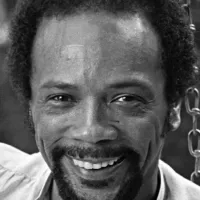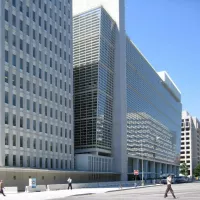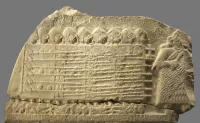Addis Ababa is the capital city of Ethiopia and the regional state of Oromia. With a population of over 2.7 million, it is the largest city in Ethiopia and one of the largest in Africa. Addis Ababa is a significant cultural, artistic, financial, and administrative hub for the country.
1906: First Public School Opens
In 1906, Emperor Menelik II opened the first public school in Addis Ababa.
1907: Land Act
In 1907, a land act was established, contributing to the accelerated population growth in Addis Ababa.
1909: Municipal Administration
In 1909, municipal administration was established in Addis Ababa, contributing to the city's growth.
1910: Establishment of Mayorship
The position of mayor of Addis Ababa was created in 1910, and Adanech Abebe is the first woman to hold this role.
1916: Introduction of modern European dramas
Around 1916, Tekle Hawariat introduced modern European dramas based on La Fontaine's fables to Addis Ababa.
1916: Railways in 1916
In 1916, the Addis Ababa–Djibouti railways connected Addis Ababa with the French Somaliland port of Djibouti.
1917: Ras Tafari Mekonnen's Appointment
In 1917, Ras Tafari Mekonnen, who later became Emperor Haile Selassie I, became the most powerful figure in the city after his appointment, and he began transforming the city through modernization and urbanization.
1918: Ras Tafari as Regency Council
In 1918, Ras Tafari gained legitimate power as regency council.
1922: Construction of Grand Anwar Mosque
In 1922, the Grand Anwar Mosque was built in Merkato by the order of the Italian government.
1926: Economic boom
In 1926, Addis Ababa experienced a wide-scale economic boom and a rise in the number of stone houses owned by the middle class that were filled with imported European furniture.
1927: Economic boom
In 1927, Addis Ababa saw a continued economic boom, with more buildings owned by the middle class that were filled with imported European furniture. The middle class also imported newly manufactured automobiles and expanded banking institutions.
1928: Italo-Ethiopian Treaty of 1928
In 1928, the Italo-Ethiopian Treaty considered a road to connect Italian occupied Assab with Addis Ababa for motor vehicle travel.
1930: Emperor's Coronation and Technological Advancements
In 1930, the Emperor was crowned and initiated the installation of power lines and telephones, as well as the construction of monuments, including Meyazia 27 Square.
1930: Automobile Increase
In 1930, the total register of automobiles in Addis Ababa went to 578.
1930: Le Corbusier's Radiant City concept
Le Corbusier extracted from his 1930 Radiant City concept, he illustrated the master plan in a guideline sketch involving a traversing route monumental structure by a grand boulevard across the city from north to south.
1933: Le Corbusier's Radiant City concept
Le Corbusier extracted from his 1933 Radiant City concept, he illustrated the master plan in a guideline sketch involving a traversing route monumental structure by a grand boulevard across the city from north to south.
May 1936: Italian Troops Enter Addis Ababa
On May 5, 1936, Italian troops from Eritrea entered Addis Ababa, which had been spared aerial bombardment, allowing its railway to Djibouti to remain intact.
1936: Initiation of Ceremonial Costumes
Ceremonial costumes of the Solomonic dynasty were initiated in 1936.
1936: Italian Invasion
In 1936, the Italian invasion of Ethiopia influenced Addis Ababa's architectural style.
1936: Guidi and Valle Master Plan
In summer 1936, Guildi and Valle prepared the master plan emphasizing fascist ideology with monumental structure and no native Ethiopian participation in designing sector.
1937: Destruction by Fascist Italian Government
In 1937, Saint George's Cathedral was ruined by the Fascist Italian government.
May 1941: Liberation of Addis Ababa
In May 1941, specifically May 5, the city of Addis Ababa was liberated by Major Orde Wingate and Emperor Haile Selassie for Ethiopian Gideon Force and Ethiopian resistance.
1941: Reconstruction After Liberation
In 1941, Saint George's Cathedral was immediately reconstructed after the liberation of Ethiopia.
1943: Abercrombie extracted from London traffic problem
Abercrombie extracted from his 1943 London traffic problem.
1946: Invitation of Sir Patrick Abercrombie
In 1946, Haile Selassie invited British master planner Sir Patrick Abercrombie to model and beautify Addis Ababa to become the capital for Africa, leading to a master plan with neighborhood units surrounded by green parkways and ring roads.
1950: Addis Ababa University Founded
In 1950, Addis Ababa University was founded as "University College of Addis Ababa".
1954: Abercrombie's satellite towns
In 1954, Bolton Hennessy and Partners commissioned an improvement of Abercrombie's satellite towns.
1955: Ethiopian National Theatre Founded
In 1955, Emperor Haile Selassie founded the Ethiopian National Theatre in Addis Ababa and renamed it after himself.
1955: Jubilee Palace Built
In 1955, the Jubilee Palace (now the National Palace) was built to mark Emperor Haile Selassie's Silver Jubilee.
1956: Abercrombie's satellite towns
In 1956, Bolton Hennessy and Partners commissioned an improvement of Abercrombie's satellite towns.
1958: United Nations Economic Commission for Africa
In 1958, the United Nations Economic Commission for Africa was founded and headquartered in Addis Ababa.
1959: Hennessy and Partners Commissioned
In 1959, the British consultant team named Bolton Hennessy and Partners commissioned an improvement of Abercrombie's 1954-1956 satellite towns.
1960: Zewde Gebrehiwot as Mayor
Zewde Gebrehiwot served as the mayor of Addis Ababa from 1960 to 1969.
1962: Addis Ababa University Renamed
In 1962, Addis Ababa University was renamed for Emperor Haile Selassie I.
1962: Land Survey
Pankhurst (1962) noted in a survey of total land of 212 square kilometers, 58% owned by 1,768, owing to 10,000 square meters, and 12% were given to church whereas other small areas were still acquired in the name of posthumous nobilities
1963: Formation of the Organisation of African Unity
In 1963, Haile Selassie helped form the Organisation of African Unity (OAU) in Addis Ababa.
1965: 1965 master plan
According to the 1965 master plan, the city covered an area of 21,000 hectares.
1965: French Mission for Urban Studies Master Plan
In 1965, the French Mission for Urban Studies and Habitat, led by Luis De Marien, launched another master plan to create a monumental axis through Addis Ababa City Hall with an extension across Gofa Mazoria.
1965: First Student March
In 1965, the first student march took place in response to the feudal imperial government of Haile Selassie, chanting "Land for the Tiller", which culminated in a Marxist–Leninist movement in Ethiopia.
1968: Population Growth Factors
According to Richard Pankhurst in 1968, Addis Ababa's population growth was accelerated by provisional governors and their troops, the 1892 famine, and the Battle of Adwa.
1973: Oil Crisis Impact
In 1973, the oil crisis heavily impacted Addis Ababa. 1,500 peasants marched to plead for food to be returned by police.
February 1974: Student Protests and Deposition of Haile Selassie
In February 1974, students gathered to protest around Addis Ababa, eventually leading to the successful deposition of Haile Selassie by a group of police officers, who later named themselves Derg.
1975: Nationalization of Rental Structures
In 1975, the Derg nationalized "extra" rental structures built by private stockholders, leading to Proclamation No. 47/1975, which weakened buildings. The administrative divisions showed an increase of woredas to 25 and 284 kebeles.
1977: Alemu Abebe as Mayor
Alemu Abebe served as the mayor of Addis Ababa from 1977 to 1985.
1984: 1984 master plan
According to the 1984 master plan, the city's area would increase to 51,000 hectares.
1985: Zewde Teklu as Mayor
Zewde Teklu served as the mayor of Addis Ababa from 1985 to 1989.
1986: Italo-Ethiopian Master Plan Set Up
In 1986, the Italo-Ethiopian master plan was set up by 45 Ethiopian professionals along with 75 Italian experts with 207 sectorial reports documented as references.
1986: Addis Ababa Master Plan
The Addis Ababa Master Plan resembles the revised 1986 master plan in terms of urban area.
May 1991: EPRDF Seizes Addis Ababa
In May 1991, specifically May 28, the Ethiopian People's Revolutionary Democratic Front (EPRDF) seized Addis Ababa, ordering a curfew for 24 hours. Military went to central locations of the city and displayed banners "Peace, Solidarity, Friendship".
1991: Establishment of Federal Structure
Following the establishment of the federal structure in 1991 under the Transitional Charter of Ethiopia, the City Government of Addis Ababa was one of the then-new 14 regional governments.
1994: Adaptation of New Constitution
In 1994, a new constitution was adapted.
1994: A survey from 1994
In 1994, a survey was conducted of preschool institutions.
1994: Postponement of the Master Plan
In 1994, the bureaucratic rule of the Derg postponed the 1986 master plan for eight years, which caused failure of basic issues in public service and unplanned development.
1994: Previous Census
In 1994, the city's population was reported to be 2,112,737, with 404,783 households in 376,568 housing units.
1995: Privatization of Government Buildings
In 1995, Proclamation No. 112/1995 legitimized privatization of many government buildings, with a few exceptions.
1995: Constitution of 1995
Under the Ethiopian Constitution of 1995, Addis Ababa is one of the two federal cities accountable to the Federal Government of Ethiopia.
1997: Addis Ababa as Chartered City
In 1997, Addis Ababa remained a chartered city with mandates for self-governing and developmental centers.
1997: Addis Ababa City Government Charter Proclamation
In 1997, the Addis Ababa City Government Charter Proclamation No. 87/1997 was established in accordance with the FDRE Constitution.
1998: Launch of New Project
From the end of 1998, a new project was launched by Addis Ababa City Administration naming Office for Revision of Addis Ababa Master Plan (ORAAMP).
1998: Addis Ababa Ring Road Construction Initiated
In 1998, the construction of the Addis Ababa Ring Road was initiated to implement the city master plan and enhance peripheral development.
1999: Addis Ababa Master Plan
From 1999, Addis Ababa City Administration naming Office for Revision of Addis Ababa Master Plan (ORAAMP), covering from 1999 to 2003.
October 2000: Inauguration of the Great Ethiopian Run
In late October 2000, the Great Ethiopian Run, a 10 km road event, was created in Addis Ababa by Haile Gebrselassie, Peter Middlebrook, and Abi Masefield.
2000: Capital Moved to Adama
In 2000, Oromia's capital was moved from Addis Ababa to Adama, sparking controversy and protests among Oromo students.
May 2002: Joy Center founded
In May 2002, Zemi Yenus created the Joy Center, a school for children with autism, in Addis Ababa.
2002: Private schools accounted for 98% of preschool institutions
In 2002, Privately owned schools accounted for 98% of preschool institutions, compared to a survey from 1994.
2002: Dissolution of the Organisation of African Unity
In 2002, the Organisation of African Unity was dissolved and replaced by the African Union (AU), which is also headquartered in Addis Ababa.
2003: Arkebe Oqubay as Mayor
Arkebe Oqubay served as the mayor of Addis Ababa from 2003 to 2006.
2003: Addis Ababa Master Plan Goal
By 2003, the plan goal was to meet the standard of market economy with favorable political system resembles the revised 1986 master plan in terms of urban area.
2003: New Terminal Opens at Addis Ababa Bole International Airport
In 2003, a new terminal opened at Addis Ababa Bole International Airport.
2003: Privately owned schools accounted for 78% of primary institutions
In 2003, privately owned schools accounted for 78% of primary institutions.
2003: Masterplan Adaptation
In 2003, the Italo-Ethiopian masterplan from 1986 was adapted for further development.
2003: Establishment of Addis Ababa Federal Police
The Addis Ababa Federal Police, a main department of the Federal Police, was established in 2003.
2004: Dire Dawa as Chartered City
In 2004, Dire Dawa remained a chartered city with mandates for self-governing and developmental centers.
2004: Program Launched
In 2004, a program was launched as a strategic partnership between the Glocal Forum, the Quincy Jones Listen Up Foundation, and Mr Hani Masri, with support from the World Bank and UN agencies.
June 2005: Capital Move Back Announced
On 10 June 2005, the Oromo Peoples' Democratic Organization (OPDO) officially announced plans to move the regional capital back to Addis Ababa.
2005: Standard of Living Indicators
As of 2005, 0.1% of Addis Ababa inhabitants fell into the lowest wealth quintile, adult literacy for men was 93.6% and for women 79.95%, and the civic infant mortality rate was 45 deaths per 1,000 live births.
2005: Election Crisis
In the 2005 national election, the ruling EPRDF party suffered a major defeat in Addis Ababa, leading to the appointment of a temporary administration.
May 2006: Berhane Deressa Appointed
On May 9, 2006, Berhane Deressa was appointed to lead the temporary caretaker administration of Addis Ababa.
2006: Deriba Merga sets course record at Great Ethiopian Run
In 2006, Deriba Merga set a new course record at the Great Ethiopian Run with a time of 28:18.61.
2007: Access to Safe Drinking Water
According to the 2007 national census, 98.64% of housing units in Addis Ababa had access to safe drinking water.
2007: Population Census
As of the 2007 population census, Addis Ababa had a total population of 2,739,551 inhabitants, with 662,728 households counted.
October 2008: End of Caretaker Administration
On October 30, 2008, the temporary caretaker administration of Addis Ababa, led by Berhane Deressa, concluded its service.
2008: 2008 African Championships in Athletics
In 2008, Addis Ababa hosted the African Championships in Athletics.
2008: Launch of EBS TV
In 2008, private television commenced in Addis Ababa with the launch of EBS TV.
2011: Genetic Analysis of Lions
In 2011, hair samples from 15 lions kept at Addis Ababa Zoo were used in a genetic analysis, revealing their genetic diversity.
2011: Addis Ababa Science and Technology University Founded
In 2011, the Addis Ababa Science and Technology University was founded with the goal of making "Ethiopia economically and industrialized state" under Directive of the Council of Ministers No. 216/2011.
April 2014: Oromo Protests Sparked
In April 2014, a controversial plan to expand Addis Ababa's boundaries by 1.1 million hectares into the Oromia special zone sparked the Oromo protests on 25 April 2014.
2014: Public Toilets
In 2014, there were 63 public toilets in Addis Ababa, with plans to build more.
January 2015: Completion of Addis Ababa Light Rail Project
In January 2015, the Addis Ababa light rail project was completed.
July 2015: Ethiopia Named Best Nation for Inbound Tourism
In July 2015, the European Council on Tourism and Trade named Ethiopia the best nation for inbound tourism.
September 2015: Addis Ababa Light Rail System Opens
On 20 September 2015, Addis Ababa opened its light rail system to the public, the first of its kind in sub-Saharan Africa.
November 2015: Escalation of Protests
On 12 November 2015, university students in Ginchi town escalated the Oromo protests to full-blown strikes and street protests.
January 2016: Cancellation of Master Plan
On 12 January 2016, the controversial master plan to expand Addis Ababa's boundaries was cancelled, by which time 140 protesters had been killed.
September 2016: Addis Ababa-Djibouti Railway Starts Operation
In September 2016, the new Addis Ababa-Djibouti Railway started operation, running parallel to the route of the original railway line.
October 2016: Licensing of commercial FM stations
In October 2016, the Ethiopian Broadcasting Agency licensed Fana Broadcasting Corporate, Walta Information Center and Arki Broadcasting Service and Ed Stelar Training as commercial FM stations.
2017: Increase in Air Pollution
In 2017, an increase in air pollution due to anthropogenic emissions was found to have increased by around 62% since the 1970s, indicated by a 34% loss in visibility in Addis Ababa.
2018: Riverside Project Initiated
In 2018, Abiy Ahmed initiated the "Riverside" project, planned to expand riverbanks for 56 kilometres (35 mi), from the Entoto Mountains to the Akaki River.
February 2019: Highest Temperature Record
On 26 February 2019, the highest temperature on record was 30.6 °C (87.1 °F).
2019: Yalemzerf Yehualaw sets course record at Great Ethiopian Run
In 2019, Yalemzerf Yehualaw set a new course record at the Great Ethiopian Run with a time of 31:55.
2020: Adanech Abebe Becomes Mayor
Adanech Abebe has been serving as the mayor of Addis Ababa since 2020.
2020: Lemi-Kura Sub-City Added
In 2020, Lemi-Kura sub-city was added as the eleventh sub-city of Addis Ababa.
2021: Study on PM2.5 Concentrations
A 2021 study found annual mean PM2.5 concentrations of 10 µg/m3A in Addis Ababa, 1.7 times higher than the WHO-recommended 24-hour guideline.
2021: Population Increase
In 2021, United Nations Population Projections estimated the population of metro area of Addis Ababa to be 5,228,000, a 4.43% increase from 2021.
October 2022: Launch of Sheger City
In October 2022, the government launched Sheger City, an urban development model containing 12 sub-cities, 36 districts and 40 rural kebeles.
2022: Completion of the Abrehot Library
In 2022, the Abrehot Library was completed, becoming the largest library in Ethiopia.
Mentioned in this timeline
Africa is the second-largest and second-most populous continent comprising of...
China officially the People's Republic of China PRC is an...

Quincy Jones is a highly acclaimed American record producer composer...

The World Bank is an international financial institution offering loans...

War is defined as an armed conflict involving the organized...

In Christianity a saint is a person recognized for exceptional...
Trending

7 months ago Derrick White Prop Bets Analyzed for Celtics vs Knicks Game 5, May 14, 2025

Michael Lee McDaniel is the head coach of the Miami Dolphins He started his NFL career as an intern for...

8 months ago Payton Pritchard's plan for Celtics bounce-back against Magic, Horford talk, big plays.

24 days ago SpaceX Launches Starlink 6-79 Mission from Cape Canaveral, Continuing Satellite Deployments
18 days ago Volaris Faces Pilot Dispute: ASPA Challenges Foreign Pilot Hiring Amid Route Revocation
20 days ago Delta faces schedule changes due to Oregon pipeline leak, Kotek declares emergency.
Popular

Candace Owens is an American conservative political commentator and author...

Ilhan Omar is an American politician currently serving as the...

XXXTentacion born Jahseh Dwayne Ricardo Onfroy was a controversial yet...

Frederick Christ Trump Sr - was an American real estate...

Oprah Winfrey an American talk show host television producer actress...

Charles James Charlie Kirk was a prominent American right-wing political...